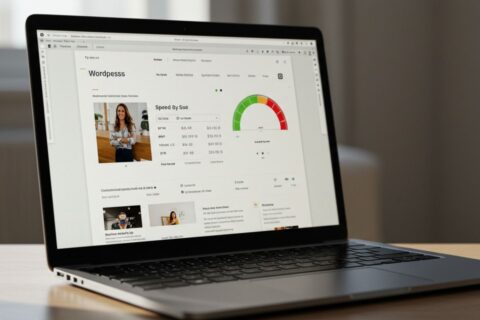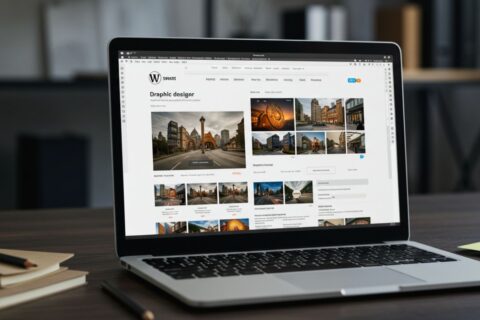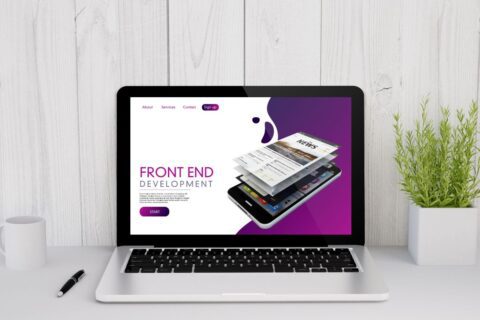Your SaaS website isn’t just a digital brochure, it’s your primary conversion engine. With competition growing by the minute, a clunky or outdated website can cost you leads, signups, and long-term customers. That’s why understanding the best practices in web design for SaaS companies is more important than ever. Whether you’re launching a new product or scaling an existing platform, following proven SaaS web design best practices ensures your site works hard to attract, engage, and convert users. In this guide, we’ll explore what makes web design for SaaS companies successful in 2025—and how you can stay ahead of the curve.
Why Web Design Matters More Than Ever for SaaS in 2025?
First Impressions: How UI Affects User Trust and Product Adoption:
In today’s fast-paced digital world, users decide within seconds whether to engage with your platform. Clean interfaces, responsive elements, and intuitive layout build immediate trust and encourage product exploration.
Conversion-Driven Design for Free Trials and Demo Requests:
Your site should actively lead users to conversion points. Clear CTAs like “Start Free Trial” or “Book a Demo” need to be prominently placed. These actions are the lifeline for SaaS growth, and the entire design should guide users there.
UX as a Competitive Advantage in Crowded SaaS Markets:
Strong user experience is often what differentiates top SaaS platforms from the rest. A streamlined onboarding process, helpful micro-interactions, and fast load times can significantly improve user retention and satisfaction.
Key Design Trends for SaaS Websites in 2025:
Minimalist Interfaces with Bold Micro-Interactions:
Modern users crave simplicity. Minimalism with dynamic elements like hover animations and scrolling effects keeps the design fresh without overwhelming the user.
AI-Enhanced Personalization for User Experience
AI is transforming SaaS website design in 2025 by enabling personalized dashboards, adaptive content, and predictive navigation paths, all of which boost engagement.
Mobile-First and Accessibility-First Design:
With mobile usage on the rise, SaaS web design best practices prioritize mobile responsiveness and inclusive accessibility. Tools like ARIA labels and contrast optimizers ensure everyone can use your product.
Use of Dark Mode and Dynamic Visuals:
Dark mode is no longer a niche feature—it’s expected. Coupled with motion graphics and video snippets, dynamic visuals enhance the user’s interactive journey.
Core Best Practices for SaaS Web Design:
1. Clear Value Proposition Above the Fold:
Your value statement should be the first thing users see. Answer the user’s key question: “What problem does this solve for me?”
Examples of High-Converting SaaS Landing Pages
Slack, Notion, and HubSpot all use headlines that communicate immediate value, paired with clear CTAs—ideal SaaS landing page design models.
2. Fast Load Times and Performance Optimization:
Page speed directly impacts conversions and SEO rankings. According to Google, 53% of users abandon a site if it takes more than 3 seconds to load.
Tools to Measure and Improve Speed:
Use Google PageSpeed Insights, GTmetrix, and Cloudflare to diagnose and fix bottlenecks. Compress images, lazy-load assets, and use efficient coding practices.
3. Intuitive Navigation and Content Flow:
Users should never feel lost. Stick to standard UI patterns that feel familiar and logical.
Menu Simplicity and User Journeys:
Use minimal navigation menus and guide users through onboarding, feature discovery, and trial signups naturally. This is a critical part of web design for SaaS companies.
4. Effective Use of CTAs and Conversion Funnels:
CTAs should be visually distinct and strategically placed.
Types and Placement of CTAs:
- Primary (e.g., “Start Free Trial”) at the top and bottom of the page
- Secondary (e.g., “Learn More”) alongside product features These help you optimize SaaS websites for conversions.
5. Trust Signals and Social Proof Integration:
People trust people. Leverage testimonials, customer logos, and third-party reviews to build credibility.
Best Practices
- Showcase customer success stories
- Add G2 or Capterra ratings
- Include security certifications and privacy badges
Common Mistakes SaaS Companies Should Avoid:
Overloading Homepage with Too Much Info:
Simplicity sells. Avoid cluttered layouts, long paragraphs, and mixed messages. Keep your homepage focused on one or two main actions.
Ignoring Mobile Responsiveness:
A non-responsive website alienates over half your traffic. Use flexible grids, scalable images, and test on real devices regularly.
Poor Contrast and Readability:
Design should never compromise clarity. Use high contrast, large fonts, and enough white space to improve user experience.
Lack of Consistent Branding:
Fonts, colors, tone, and messaging should remain consistent across all pages. This strengthens your identity and builds trust.
Future-Proofing Your SaaS Website:
Staying Updated with Design Systems and Frameworks:
Adopt scalable design systems like Material UI or Tailwind CSS. They allow for consistent, rapid development and easier team collaboration.
Incorporating Voice UI and Chatbot Interfaces:
Voice navigation and AI chatbots are becoming standard. They provide faster support and richer interactivity, especially for onboarding and FAQ handling.
Preparing for Web3 and Decentralized Identity Integrations:
As Web3 becomes more mainstream, integrating blockchain-based logins and data privacy protocols may become a valuable trust and security factor.
Final Thoughts
In the competitive world of SaaS, a strong website is your best salesperson. By following the best practices in web design for SaaS companies, prioritizing user experience, and staying ahead of trends, your site can attract, convert, and retain users at every stage of their journey.
Whether you’re refreshing your site or building from scratch, these principles will help you stand out with a modern SaaS website layout that drives real results in 2025 and beyond.
H2: FAQs About SaaS Web Design Best Practices
Q1: What should a SaaS homepage include in 2025?
A: A clear headline, strong CTA, product value statement, demo/trial button, and trust signals are must-haves.
Q2: How important is responsive design for SaaS websites?
A: It’s critical—over 60% of SaaS traffic now comes from mobile devices.
Q3: Should SaaS sites focus on SEO or conversion optimization?
A: Both. A well-designed site balances SEO best practices with UX-driven conversion paths.
Q4: What tools can help improve SaaS website design?
A: Figma, Webflow, Hotjar (for user behavior), and Google PageSpeed Insights are popular in 2025.







